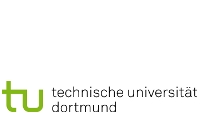QCD Sum Rules and Hadronic Matrix Elements
Principal Investigator: Alexander
Khodjamirian (Siegen)
Participating Researchers: Guido
Bell (Siegen), Thorsten
Feldmann (Siegen), Thomas
Mannel (Siegen)
A transparent way to study transitions between the quarks of different flavour is provided by the electroweak decays of hadrons with exclusive final states, such as the leptonic, semileptonic and radiative decays of heavy mesons and baryons. In the theory and phenomenology of these decays, hadronic matrix elements are indispensable. They involve long-distance interactions of the quarks confined within hadrons and comprise all hadronic effects accompanying the elementary quark-flavour transitions. Therefore, a complete description of the exclusive flavour-changing decays is not possible, before one solves a challenging problem to calculate hadronic matrix elements on the basis of quantum chromodynamics (QCD).
Recent years were marked by prolific measurements of exclusive decays of heavy mesons and baryons, provided by the first stage of the LCHb experiment and by the complete data samples obtained at \BaBar\ and Belle detectors. In the near future, significantly more data on the decays of heavy hadrons are anticipated in the future run of LHC experiments and after the launch of the Belle~II experiment, complemented by the studies at BESS-III charm factory. The so far accumulated data are being intensively used to analyse the quark-flavour observables within Standard Model (SM) and within its extensions involving new physics phenomena.
Several tensions with the SM predictions are currently being observed. One can mention a persistent discrepancy between the values of the CKM matrix element Vub determined from the exclusive and inclusive semileptonic b→ u transitions; there are also certain hints at anomalies in the b→sl+l- exclusive decays. In order to resolve these tensions and to match the continuously improving measurements of decay observables, the QCD-based predictions of hadronic matrix elements have to achieve an adequate accuracy, with cleanly identified theoretical uncertainties and correlations. Furthermore, decays with two hadrons in the final state, such as the semileptonic B→ππlνl and B→Kl+l- decays provide several observables, used in the search for deviations from the SM. However, strong interactions of the final state hadrons and formation of resonances remain challenging problems demanding to combine the QCD-based calculations with the tools of hadron phenomenology, such as dispersion relations.
In recent years, the method of QCD sum rules, successfully complementing the lattice QCD, continued to provide analytical calculations of various hadronic matrix elements relevant for quark-flavour transitions. Mutually connected versions of this method are the light-cone sum rules (LCSRs) for hadronic form factors and two-point sum rules for the decay constants of hadrons. One employs two different procedures of the operator product expansion (OPE) in QCD with, respectively, distribution amplitudes (DAs) of hadrons and vacuum condensates used as universal nonperturbative parameters. Extensions of the sum rule approach to the heavy-quark effective theory (HQET) and to the soft-collinear effective theory (SCET) provide valuable information on the effects suppressed by the powers of the inverse heavy quark mass or of the inverse hadronic recoil energy.
During the first stage of the Project~3 the first exploratory study of the B→ππ semileptonic form factors were carried out, the new solution of the renormalization problem for heavy-hadron DAs has been obtained, the hadronic matrix elements for the rare flavour-changing neutral current decay B→πll have been calculated, the first comprehensive analysis of extrapolations and correlations for the LCSR B→π form factor has been fulfilled and the accuracy in the two-point sum rules for the decay constants of heavy flavoured vector and pseudoscalar mesons has been improved, together with the other related results.
The major goal of the second stage of the Project~3 is to further strengthen and diversify the methodology of QCD sum rules, applying it to various hadronic matrix elements for the heavy-hadron exclusive decays relevant for the probes of SM.
The LCSRs in full QCD with finite quark masses, combined with the two-point sum rules, will prevail as the major working methods. Extensions of LCSRs to HQET, in particular, the sum rules employing DAs of B-meson and Λb-baryon and having connection to SCET, will also be explored, employing the new renormalization scheme developed in the first stage of the project. New calculations of the hadronic matrix elements for semileptonic decays of heavy mesons with two pseudoscalar mesons in the final states will be carried out within LCSR approach, involving dimeson DAs. Specific pion and K→π form factors in the timelike ρ and K* resonance region, providing the main input for the dimeson DAs, will be studied, combining dedicated LCSRs and hadronic dispersion relations. The accuracy of LCSRs for Λb→p form factors at large recoil will be improved, with an emphasize on an independent Vub determination. Furthermore, the analysis of correlations between various sum rules will be carried out to further reduce theoretical uncertainties. An intensive exchange of information with the lattice QCD groups working in flavour physics will continue.
The project as a whole will result in a mutually correlated set of various QCD sum rule techniques with improved accuracy of the OPE, updated inputs and with new applications to the hadronic matrix elements relevant for the quark-flavour transitions.

